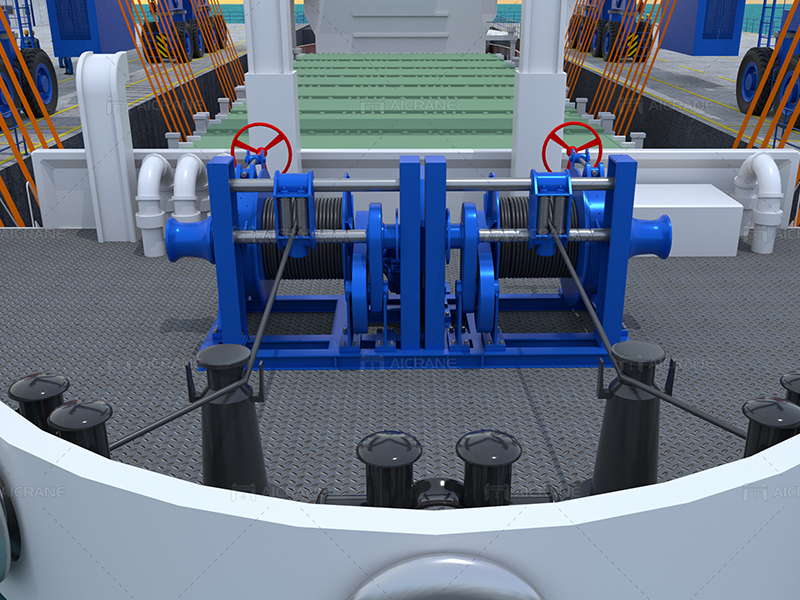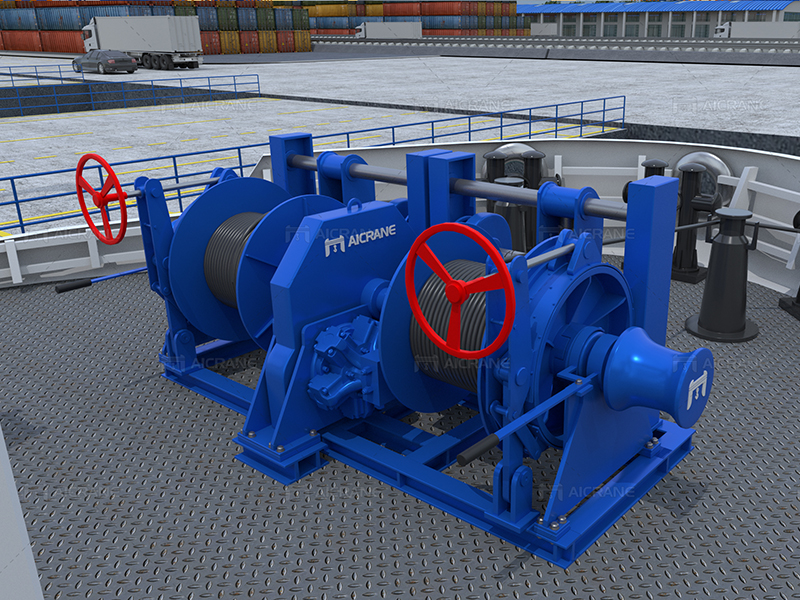Hydraulic mooring winches play a pivotal role in the maritime industry, ensuring the safe and secure berthing of vessels. Shipowners and operators rely on these robust mechanisms to efficiently handle mooring lines, contributing to the overall safety and operational success of marine activities. One crucial aspect that demands attention when considering hydraulic mooring winches is their lifespan. Understanding the factors that influence the lifespan of these winches is vital for making informed decisions about maintenance, replacement, and overall operational efficiency.

Factors Influencing Lifespan of Hydraulic Mooring Winches
Quality of Manufacturing: The foundation of a hydraulic mooring winch lifespan lies in the quality of its manufacturing. High-quality materials, precision engineering, and adherence to industry standards contribute significantly to the overall durability of the winch. Manufacturers with a reputation for excellence often produce winches that stand the test of time, requiring less frequent replacements and repairs.
Operating Conditions: The environment in which a hydraulic mooring winch operates plays a pivotal role in determining its lifespan. Harsh weather conditions, exposure to saltwater, and extreme temperatures can accelerate wear and tear. Winches that are specifically designed for offshore applications or adverse weather conditions may have a longer lifespan due to their ability to withstand these challenges.
Maintenance Practices: Regular and comprehensive maintenance is a key factor in extending the lifespan of hydraulic mooring winches. Routine inspections, lubrication of moving parts, and prompt repairs of any identified issues contribute to optimal performance. Neglecting maintenance can lead to premature wear, reducing the overall lifespan of the winch.
Frequency of Use: The frequency with which a hydraulic mooring winch is utilized also impacts its lifespan. Winches that undergo frequent and intense usage may experience more wear on their components. However, quality winches are designed to handle heavy workloads, and their lifespan can be prolonged through proper maintenance and occasional inspections.
Load Capacity: The load capacity of a hydraulic mooring winch is a critical factor. Using a winch beyond its specified capacity can lead to accelerated wear and reduced lifespan. It is essential to match the winch’s load capacity with the requirements of the vessels it serves. Regularly exceeding this capacity can result in strain on the winch’s components, potentially leading to premature failure.
Technological Advances: The rate of technological advancements in the manufacturing of hydraulic mooring winches can influence their lifespan. Modern winches often incorporate innovative materials, designs, and features that enhance their durability and efficiency. Upgrading to newer models with improved technology may be a strategic decision for operators seeking longer-lasting and more reliable equipment.

Maximizing Lifespan through Best Practices
Adherence to Manufacturer Guidelines: Following the manufacturer’s guidelines and recommendations is paramount to ensure the optimal performance and lifespan of hydraulic mooring winches. This includes adhering to prescribed maintenance schedules, using recommended lubricants, and operating the mooring winch within specified parameters.
Regular Inspections: Implementing a routine inspection schedule is essential for identifying potential issues before they escalate. Regular checks should include examining hydraulic fluid levels, inspecting the condition of cables and hoses, and ensuring that safety features are in proper working order.
Proactive Repairs: Promptly addressing any identified issues or signs of wear is crucial for preventing further damage. Proactive repairs can help extend the lifespan of a hydraulic mooring winch and minimize downtime.
Training and Education: Proper training for operators and maintenance personnel is key to ensuring that the hydraulic mooring winch is used correctly and that maintenance procedures are carried out effectively. Well-informed operators are better equipped to identify potential issues early on and operate the winch in a manner that promotes longevity.
Conclusion
In conclusion, the lifespan of a hydraulic mooring winch is influenced by a combination of factors, including manufacturing quality, operating conditions, maintenance practices, frequency of use, load capacity, and technological advancements. Shipowners and operators must recognize the importance of these factors to make informed decisions regarding the purchase, maintenance, and replacement of hydraulic mooring winches.
By prioritizing regular maintenance, adhering to manufacturer guidelines, and staying abreast of technological advancements, operators can maximize the lifespan of their hydraulic marine winches. Investing in high-quality equipment and adopting best practices not only ensures the safety and efficiency of mooring operations but also contributes to the overall success and sustainability of maritime activities.